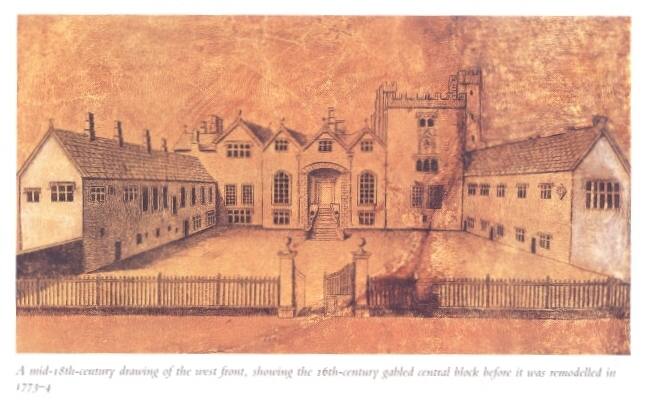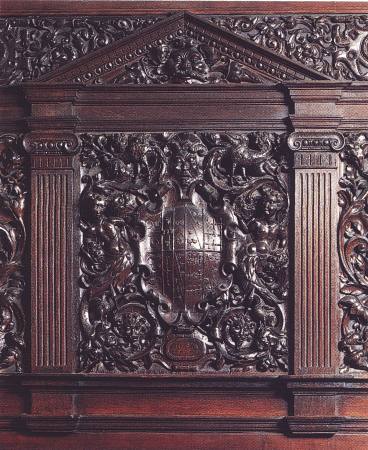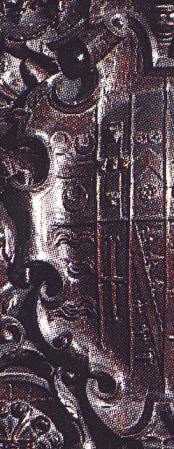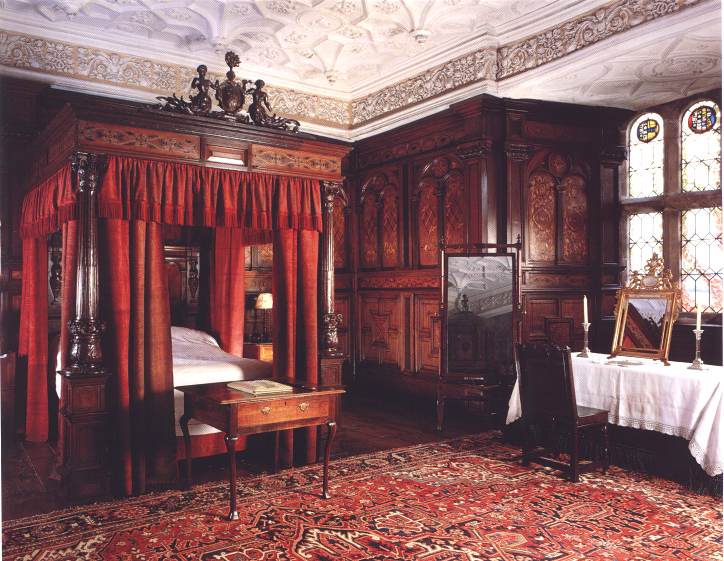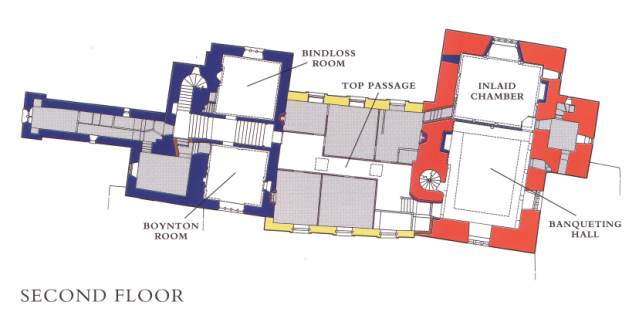It Was Not Only Economy; Three Love Stories
Thomas Boynton -- he gave it all up for Alice.
Marriage and family was economy. When marriages were arranged
they were arranged with one eye on the wealth and prestige that would result
in joining the two families. In six hundred years of Boynton history there
are many marriages; frequently there was a second and third marriage as one
person outlived his or her partners [A Boynton Story: The
Tangled Web of Castle Leavington]. And it is reasonably easy to spot how
marriages were important in moving wealth into and between families [A
Boynton Story: Marrying Well]. Love stories
are much harder to trace. A documentary trail is quite exceptional for love
stories. So, in the six hundred years we know only three love stories, and
our knowledge is based only on snippets of evidence. Thomas and Alice is one
of those love stories.
Thomas Boynton, he gave it all up to move in with Alice. Thomas
had a lot to give up. He was born at Barmston about 1523 on the land his great
grandmother, Margaret del See, had added to the Boynton fortune. It was a
wonderful place to grow up; right on the seashore -- with high bluffs and
wide beaches. It was only a short walk from the manor house to the seashore.
This is a twentieth century version of what Thomas, as a boy, must have enjoyed
in the sixteenth century.
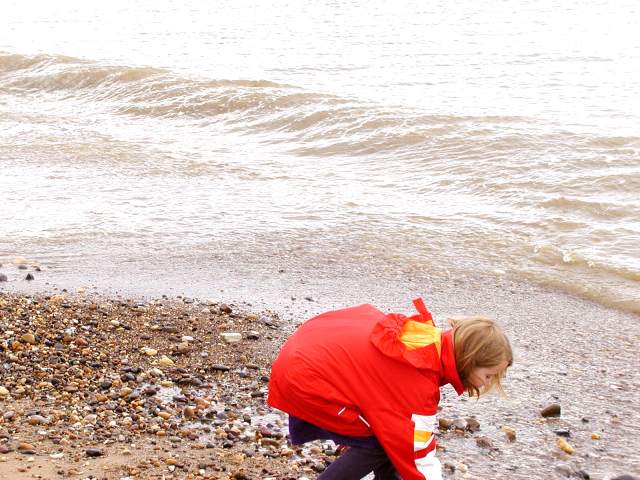 |
|
Anna Bassett Boynton at Barmston Beach
|
Thomas was one of the richest men in Yorkshire; his land holdings
were among the ten largest in the East Riding [English, p. 16]. He had spent
much of his life in public service: he served several terms on the Commission
of Peace; he had been High Sheriff; he served as a Member of Parliament; and
he served on the Council of the North. In addition, he served a variety of
commissions for the king and then the queen. And then he gave it up. In 1573
he left the management of the family fortune and the family manor to his son
and moved to Westmoreland to live with Alice. He stayed on the Council of
the North and he served two commissions for the Queen, but he reduced his
public service. He went into semi-retirement, and married for the third and
last time.
Alice was Alice Tempest Place Strickland Boynton. She was a
wealthy widow with two small children and a castle -- compliments of Walter
Strickland, her second husband. Sizergh Castle was the Strickland family castle,
and it was almost as far west in northern England as Barmston was east. Walter
moved from one side of the land to the other to join Alice.
It seems clear that economy was not involved in this marriage.
Both were wealthy. Thomas Boynton's heir, his son Francis, inherited the Boynton
land when Thomas died. And Thomas Strickland, the heir of Alice's second husband
Walter, inherited the Strickland land. Economy does not seem to account for
the union.
So, what did they do? Thomas moved to Sizergh Castle and helped
raise the Strickland children. Thomas Strickland was only 11 when Alice married
Thomas Boynton and he was the oldest child.
This is Sizergh Castle when Thomas moved in. It has changed
over the centuries, but this drawing is old enough to reflect what he was
moving into. It is three stories in the main section of the castle -- a ground
floor and a first and second floor.
They raised children, and they redecorated. Their bedroom became
the Boynton Room, and remains the Boynton Room today. A distinctive feature
of the Boynton room is the the carving over the fireplace -- the overmantle
-- that has the arms of the Boyntons impaling the arms of the Tempests and
topped with a horned grotesque representing the Boynton crest of a goat.
The picture on the left is much of the overmantle in the Boynton
Room, but it is too small to identify the Boynton arms. The picture on the
right is a slice of the picture on the left. The Boynton arms -- crescents
and fess -- are in the top, left hand quadrant.
And they put together a room called the Inlaid Room.
This magnificent state bedchamber is the culmination in the Elizabethan
work at Sizergh. Between about 1575 and the mid-1580s it was fitted out
with elaborate plasterwork and the inlaid oak panelling from which it takes
its name, for Alice Strickland and her third husband, Sir Thomas Boynton.
Complete with its domed and arcaded corner porch, heraldic glass, and carved
and inlaid state bed, the room would always have been the showpiece of the
house, reserved for honoured guests [The National Trust, p. 26].
It is a very elaborate room. Just the ceiling of the room,
which is plaster with a pattern that incorporates the crests of the families
important in Sizergh history, must have taken much time to plan. There is
also the panelling. And the furniture. They could have spent many hours dreaming
about how to remodel.
By remodeling the Boynton Room and the Inlaid Chamber they made
a considerable change in the second floor. There are only two other rooms
on the floor, in addition to passage ways.
And that was fulfillment enough. Thomas died in 1583. Alice
did not remarry, and died in 1588.
Matthew and Francis is the second love story. Matthew wrote
about Frances: "The said Sr Matthew Boynton to manifest his love to his
so well deserveinge wife hath with his owne hand inscribed and caused to be
errected this marble."
Matthew was the grandson of Thomas Boynton of Barmston -- and
then Sizergh. Frances was the daughter of Henry Griffith. The Griffiths of
Burton Agnes had, like the Boyntons, one of the ten largest land holdings
in the East Riding of Yorkshire. Economy was certainly a part of this marriage.
There was a pre-nuptial agreement that can be found at the archive at Hull
University. It is three very large pages written in tiny hand. It spells out
in detail what each side brought to the union. Frances came with a very handsome
dowry. Eventually her brother died without heir and Frances' heirs inherited
both the Boynton and the Griffith holdings -- uniting the two quite substantial
fortunes. But that was long after Frances was dead.
Frances and Matthew were married in 1618 and she lived until
1634. They lived together only 16 years before she passed away. In the sixteen
years they had twelve children, which suggests they took every opportunity
to consummate their love.
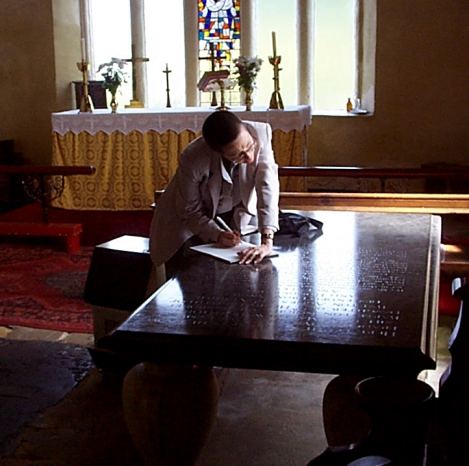 |
|
Anne Boynton at Roxby Church
|
When Frances died Matthew wrote his goodbye on a stone that
stands over her grave in the church at Roxby. He wrote in the language available
to him in his day.
Here lyeth the bodie of the Lady Frances Boynton sometymes wife
of Sr Matthew Boynton of Barmston and Barronet, daughter of Sr Henry Griffith
of Burton Agnes Knt a familie discended from ancient and honourable ancesters.
Her life much more remarkable for graces then for dayes Yet
in that more then ordinarilye Abreviated tyme, her Prudent and Provident disposeing
of all thinges Pertaining to the duty of her Sex As also in her indefatigable
dilligence in the faithfull Education of her children was so conspicuously
manifested That besides the good acceptance thereof which God testified to
her in Anumorous Posteritie Shee had also hereby Ingraven soe deepe An Impression
in the hearts of all that knew her Pious conversation That were it not that
Mortalitie doth deface the memorie of thinges shee needed no other monument
shee dyed about ye 3d of July in ye yeare of her age 36 Anno
Dni 1634
The said Sr Matthew Boynton to manifest his love to his so well
deserveinge wife hath with his owne hand inscribed and caused to be errected
this marble.
Some lines are graceful -- "Her life much more remarkable
for graces then for dayes."
Some would have been graceful if not wordy and convoluted --
"Shee had also hereby ingraven soe deepe an impression in the hearts
of all that knew her pious conversation that were it not for that mortalitie
doth deface the memorie of thinges she needed no other monument."
Look beyond the language. Matthew was inscribing the stone --
himself. Someone must have said or he must have thought -- Matthew, you cannot
do this. You have an estate to run. You have a dozen children to raise. You
have the Commission of Peace and the other work of the realm. You could pay
a good stone mason to carve this stone.
But nothing was as important as the final goodbye to his love.
The most poignant of the love stories is Cecily's. Cecily Strangeways
married Thomas Boynton, the grandfather of the Thomas of Barmston and Sizergh.
They had four children and then Thomas died. Thomas was 22 when he died in
1523, and Cecily must have been about the same age because she did not die
until 1550. That left Cecily to raise the children and manage the estate in
cooperation with her mother in law -- Margaret del See Boynton. She and Thomas
had lived in Roxby, where he was buried. Apparently, she continued to live
in Roxby, for she was also buried in Roxby. About Roxby: out of the way is
an understatement. Down a narrow, winding road you arrive at a few farm houses,
a church at the bend in the road and what is left of the manor house [A
Boynton Place: Roxby]. It must
have been a very lonely life for the lady of the manor who was still in her
twenties.
Then another chance for love -- Josceline Percy. Josceline was
the fourth son of Henry Percy, the fourth earl of Northumberland. He had married
Margaret Frost, but she died in 1530. He and Cecily met. They loved. And the
love was crushed -- we have only one line.
Josceline himself followed on September 8, 1532, having made
his will the previous day, in which he leaves "to my dearly beloved contracted
wife Cecily Boynton, the late wife of Thomas Boynton, esquire, my executor,
the residue of my goods." (Walker, 1941)
She would have become Cecily Strangeways Boynton Percy except
for this turn of fate. And there is reason to believe that fate was given
a helping hand. William Percy, Josceline's brother, wrote Cromwell "accusing
three of Josceline's servants and a maid, of having killed their master by
poison, after inducing him to sign a will in their favour" [Brenan, p.
217-18].
And she lived alone -- two loves lost -- until her death in
1550.
It is hard to find love stories during this six hundred years.
It is easy to find stories about marriage and economy. But they did quite
a lot of marrying, which was the cruelty of inadequate health care and a warring
culture. It would be most surprising if love was not there as it is here in
our lives.
....
Brenan, Gerald (1902) A History of the House of Percy
From the Earliest Times Down to the Present Century, vol. I, Freemantle,
London, pp. 217-18.
English, Barbara (1990) The Great Landowners of East Yorkshire
1530-1910, Harvester, Wheatsheaf.
National Trust (2001) Sizergh Castle.
Walker, J. W. (1941) The Blackers of Blacker Near Worsborough
and Crigglestone in the West Riding of the County of York, 1250-1650, The
Yorkshire Archaeological Journal, pp. 247-248.

